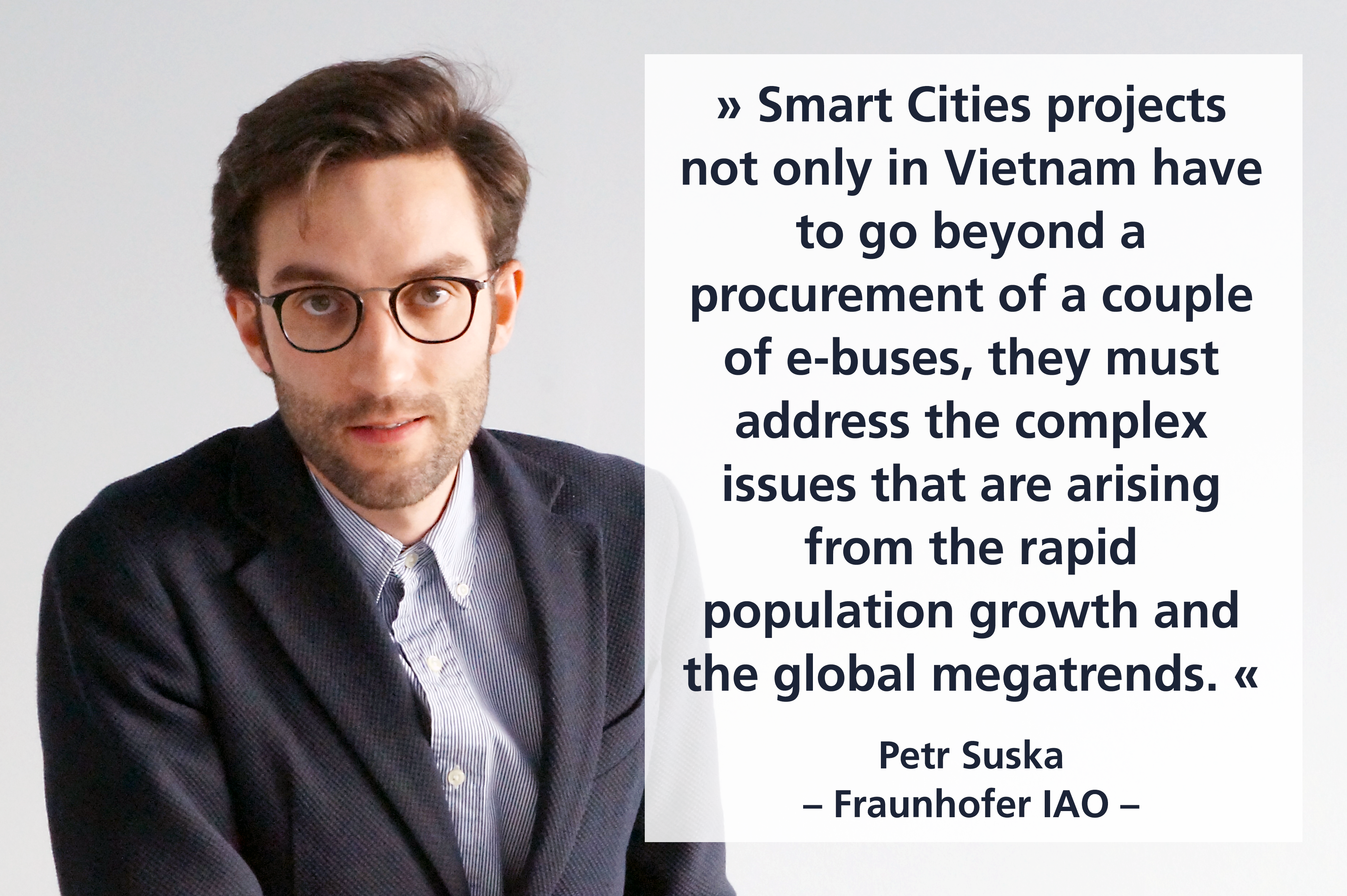Lesen Sie den Artikel hier auf Deutsch.
12-12-17
Stuttgart / Saigon – Morgenstadt goes East! Nowhere else in the world the population is growing as rapidly as in Asia. This puts enormous pressure on the cities there, which are struggling with such annual population growth that is hard to imagine in Europe or North America. As a result, from the beginning of the 21st century, a large number of the big cities there are about to become megacities. But that is not the only challenge that Asian metropolises have to face. The Pacific region is also confronted with much greater consequences of the climate change, and the economy of the largest part of the world has also been growing rapidly for years and increasingly requires infrastructure that keeps up with the associated burdens. In Vietnam, they are now on the way to shape the future of their own cities dynamically but also sustainably. The scientists of the Morgenstadt Initiative would like to accompany the transformation of the metropolises into the Smart Cities with their expertise. For this purpose, an exchange between the Fraunhofer researchers and the local actors in Saigon (Ho Chi Minh City) took place recently as part of the event "Morgenstadt International". We talked to the accountable scientist, Petr Suska, who shared with us fascinating impressions of his visit to the East Asian country.
1. Petr, you were recently presenting the Morgenstadt approach at an event, called Morgenstadt International, jointly organized with the Vietnamese-German University of Saigon. Could you tell us a little more about the purpose of the event? Who had the original idea for the cooperation?
P.S.: The event is part of a joint project co-funded by the German Federal Ministry of Education and Research and the Fraunhofer Society. The purpose of the project is to intensify innovation partnerships between German research institutions and companies and the Vietnamese counterparts. The project also extends to India. The overall concept is to bring a global approach to local solutions and help building the city of tomorrow. The Vietnamese-German University and the Fraunhofer office in Bangkok were both key partners in the success of the event in Saigon, Vietnam. For Fraunhofer IAO, the event was particularly important, as it presented a great platform to discuss the Morgenstadt International project as well as the City Lab approach and Value of Urban Data Innovation partnerships.
2. The Asian market is fast growing and gets more and more important for Western countries and companies. What’s so special about Vietnam and why is it interesting for smart city projects?
P.S.: Vietnam in the past 20 years has been of the fastest growing markets and economies in the world. There is a phenomenal trajectory of the numbers of people using smartphones and those being connected to internet. The level of physical development of cities such as Saigon is also impressive, with new developments and projects such as Saigon Silicon Valley, which aims to attract $1.5 bn of investment. Smart Cities is one of the hottest topics in Vietnam. There are already smart district development projects in the pipeline in Saigon, Hanoi and Da Nang worth billions of dollars. Many consultancies and construction companies are trying to grab a piece of the pie. Fraunhofer IAO is positioning itself so that it could provide insightful intelligence and pre-investment assessment to some of these projects in order to ensure the focus on the overall quality of the concepts that are being developed.
